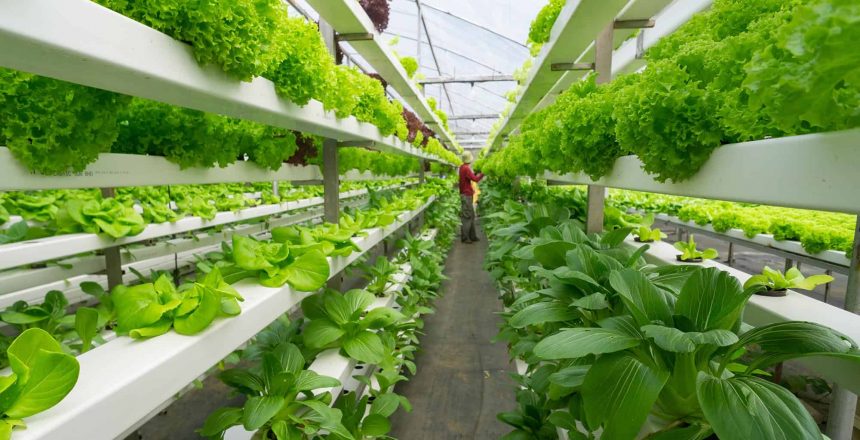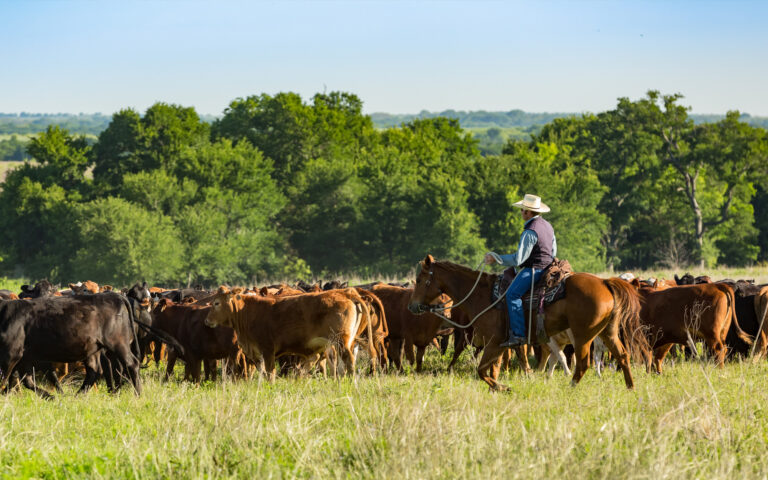In agriculture, innovation, and technology are pivotal in addressing food security while ensuring sustainable practices. One standout initiative that exemplifies this is the Vertical Harvest Maine (VHM) project.
Thanks to substantial backing from a vertical hydroponic garden loan, formed by the USDA’s loan programs, VHM is on its way to revolutionizing the agriculture industry by constructing a state-of-the-art Controlled Environment Agriculture (CEA) hydroponic farm in Westbrook, Maine. Learn more as we highlight the essential role of government support in fostering agricultural innovation.
What Are Vertical Hydroponic Garden Loans?
A vertical hydroponic garden loan is a specialized financial USDA product created by the USDA and designed to support individuals or entities interested in initiating or expanding vertical hydroponic gardening projects. Vertical hydroponic gardening is a form of agriculture where plants are grown in a vertical, soilless environment, using mineral nutrient solutions in water, thus maximizing space efficiency and potentially reducing water usage and pests. This type of gardening is particularly suitable for urban areas or places where arable land is scarce.
The loan provides the necessary capital to cover various expenses associated with setting up or enhancing a vertical hydroponic system. These expenses can include:
- The cost of purchasing or leasing hydroponic equipment (like pumps, lights, growing medium, and vertical structures
- Seeds, nutrients, and even operational costs like electricity and water
- Costs related to obtaining technical consulting, training in hydroponic farming techniques, and marketing the produce grown in these vertical farms
Common Benefits
Provisions within a vertical hydroponic garden loan typically ensure that borrowers have access to competitive interest rates and terms that acknowledge the unique aspects and timelines of agricultural production. For instance, repayment schedules can be tailored to align with the harvest and sales cycles of the borrower’s specific crops, offering more flexibility than conventional loan structures. Additionally, these loans may come with technical support from a lending institution (like Ready Capital), offering guidance on optimizing hydroponic operations or connecting borrowers with experts in the field.
This form of financial product encourages sustainability and innovation in agriculture, making it easier for farmers and entrepreneurs to invest in technologies that are water-efficient, space-saving, and can contribute to local food security. By mitigating some of the financial risks and barriers to entry associated with vertical hydroponic farming, these loans play a crucial role in fostering the growth of urban and controlled environment agriculture.
Let’s see how these loans have worked in action:
With a Credit Union Service Organization (CUSO), your financial needs aren’t limited by industry or location. Explore the industries we serve.
How Vertical Harvest Maine Began
Formed in November 2020, VHM embarked on an ambitious journey to develop a 51,000-square-foot facility that, when fully operational, will expand to 208,000 square feet of growing space. This expansion is not just about scale; it’s a transformative step towards producing an estimated 2.6 million pounds of leafy greens annually, including lettuce, petite greens, and microgreens. Standing behind the venture is VHM Holdco LLC, holding an 80% ownership stake, alongside an outside equity group and individual investors.
The Financing Behind VHM
Navigating the complex landscape of agricultural financing, VHM orchestrated a comprehensive funding strategy totaling $48.8 million, aimed to cover a spectrum of needs from construction costs to working capital. Key to this financial plan were two pivotal USDA loan programs: the Business & Industry (B&I) financing of $25 million and $23.795 million from the Renewable Energy for America Program (REAP)/Energy Efficiency and Conservation Loan Program (EEE).
Complementing this was a strategic $31 million bridge loan facilitated by Genisys CU and Ready Capital, pre-empting the USDA’s commitment and ensuring the project’s momentum. This interim loan was a lifesaver, allowing construction to proceed without delay and equipment deposits to be settled.
Synergizing With USDA Loan Programs
The B&I and REAP/EEE loans are crucial to the project’s forward movement. With an 80% guarantee from the USDA, these loans present a lower risk to lenders and a lifeline to ventures like VHM that are pushing the boundaries of agriculture. Moreover, the rates and terms offered (24-year term and 22-year amortization with an initial interest-only period) are tailored to meet the long-term nature of agricultural investments.
These USDA programs were not just sources of funding but cornerstone elements that underpinned the project’s feasibility and sustainability. By leveraging these programs, VHM could navigate the financial complexities of launching a large-scale, innovative agricultural project. The conditions tied to the loans, including the no personal guarantee caveat, were instrumental in securing the necessary financial commitment without overburdening the stakeholders.
Overcoming Financial and Operational Hurdles
The journey was not without its challenges. The need for an interim loan highlighted the intricate balancing act needed to keep such an ambitious project on track. The bridge loan, despite its higher costs and stringent security requirements, provided the necessary liquidity at a critical juncture. Furthermore, the anticipation of SBA loan allocations and the complexity of managing various funding sources underscored the project’s vulnerability to timing and approval hurdles.
The strategic use of C-PACE equity further exemplifies the multi-faceted approach required to finance such ventures. By tapping into green construction financing, VHM not only bolstered its financial structure but also aligned with sustainable building practices, reducing overall risk and enhancing the project’s appeal to environmentally conscious stakeholders.
How the USDA Plays a Role as an Agricultural Catalyst
The USDA’s role in this project goes beyond simple funding. By offering programs specifically designed to foster innovation, sustainability, and rural development, the USDA stands as a pivotal force in the transformation of agriculture. The VHM project, with its integration of cutting-edge hydroponics and controlled environment agriculture technologies, sets a precedent for how USDA-supported initiatives can lead the charge toward a more efficient and sustainable agricultural future.
The eligibility criteria under both B&I and REAP/EEE programs were meticulously crafted to ensure that projects like VHM could qualify, reflecting the USDA’s recognition of the importance of supporting diverse, innovative agricultural models. This inclusivity not only expands the scope of USDA’s impact but also encourages a broader spectrum of entrepreneurial ventures to envision and embark upon ambitious agricultural projects.
The Broader Implication of VHM’s Journey
Vertical Harvest Maine exemplifies the transformative power of strategic financing, innovative agricultural practices, and supportive policy frameworks. Through its journey, VHM is not just constructing a facility; it is cultivating a model for future agricultural ventures to emulate. The symbiotic relationship with USDA’s loan programs underscores the critical role governmental support can play in propelling agricultural innovations from concept to reality.
Looking forward, the VHM project is poised as a beacon of innovation, sustainability, and social inclusivity in agriculture. It stands testament to the synergy of entrepreneurship, technological advancement, and strategic governmental support in shaping the future of agriculture. As the project advances, it not only promises to yield millions of pounds of fresh produce but also sows the seeds for a new era of sustainable, tech-driven cultivation practices, firmly supported by crucial USDA programs.
Key Takeaways
- The Vertical Harvest Maine project is a vivid illustration of the power of combining visionary agricultural initiatives with strategic financial and governmental support.
- The USDA’s loan programs, like vertical hydroponic garden loans, have not only catalyzed this ambitious project but have also reinforced the agency’s role as a key enabler of agricultural innovation and sustainability.
- Through ventures like VHM, the future of agriculture looks brighter, greener, and more bounteous than ever.
Secure the Funding You Need With Ready Capital
Take the first step towards revolutionizing the agricultural industry with cutting-edge technology and sustainable practices, just like the Vertical Harvest Maine project. Let Ready Capital be your guide in navigating the complexities of agricultural financing with extensive support and expertise in government-guaranteed lending.





